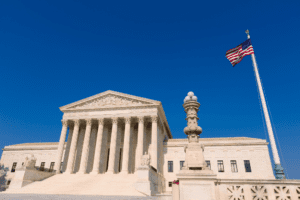 The dissent continued: After holding individual hearings for each petitioner, Justice McNally denied their requests. Id., at 31, 41, 105, 107, 114. He clarified that, in addition to hunting and target shooting, Koch and Nash could “carry concealed for purposes of off road back country, outdoor activities similar to hunting, for example fishing, hiking & camping.” Id., at 41, 114. He also permitted Koch, who was employed by the New York Court System’s Division of Technology, to “carry to and from work.” Id., at 111, 114. But he reaffirmed that Nash was prohibited from carrying a concealed handgun in locations “typically open to and frequented by the general public.” Id., at 41.
The dissent continued: After holding individual hearings for each petitioner, Justice McNally denied their requests. Id., at 31, 41, 105, 107, 114. He clarified that, in addition to hunting and target shooting, Koch and Nash could “carry concealed for purposes of off road back country, outdoor activities similar to hunting, for example fishing, hiking & camping.” Id., at 41, 114. He also permitted Koch, who was employed by the New York Court System’s Division of Technology, to “carry to and from work.” Id., at 111, 114. But he reaffirmed that Nash was prohibited from carrying a concealed handgun in locations “typically open to and frequented by the general public.” Id., at 41.
Neither Koch nor Nash alleges that he appealed Justice McNally’s decision. Brief for Respondents 13; see App. 122–126. Instead, petitioners Koch and Nash, along with the New York State Rifle & Pistol Association, Inc., brought this lawsuit in federal court against Justice McNally and other State representatives responsible for enforcing New York’s firearms laws. Petitioners claimed that the State’s refusal to modify Koch’s and Nash’s licenses violated the Second Amendment. The District Court dismissed their complaint. It followed Second Circuit precedent holding that New York’s licensing regime was constitutional. See Kachalsky, 701 F. 3d, at 101. The Court of Appeals for the Second Circuit affirmed. We granted certiorari to review the constitutionality of “New York’s denial of petitioners’ license applications.” Ante, at 8 (majority opinion).
As the Court recognizes, New York’s licensing regime traces its origins to 1911, when New York enacted the “Sullivan Law,” which prohibited public carriage of handguns without a license. See 1911 N. Y. Laws ch. 195, §1, p. 443. Two years later in 1913, New York amended the law to establish substantive standards for the issuance of a license. See 1913 N. Y. Laws ch. 608, §1, pp. 1627–1629. Those standards have remained the foundation of New York’s licensing regime ever since—a regime that the Court now, more than a century later, strikes down as unconstitutional.
Here, we again see an interesting flip in the approach of the “conservative” majority and “liberal” dissent. The typical conservative approach is to look at the original intent of the framers of the Constitution. The typical liberal approach is to view the Constitution as a living and breathing document with results that can change over time. Here, Justice Thomas focused on modern day standards of what is reasonable and common protection. Justice Breyer, on the other hand, focused on the intent of the drafters of New York’s Law in 1911.
